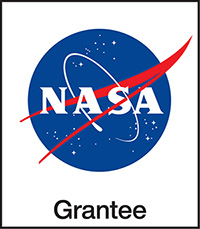Full Educator Guides
CONTEXT SETTING
ADVENTURES
CONTEXT SETTING
ADVENTURES
ACTIVITIES
How to Teach These Units
Educator Background Information on Hazards
This background information on Hazards gives educators additional information and context about each hazard that your learners will encounter during the Space Hazards science adventures. These are written to you, the educator, to help support and enhance your engagement in this curriculum and are not intended as youth-facing material.
This information is grouped into three categories – Earth Hazards, Earth & Space Hazards, and Space Hazards.
Also, don’t forget to explore the All Downloads, All Videos, Quick Links, and Family Resources in the Additional Resources Menu.
Earth Hazards
Lava Flow, Floods, Wildfires
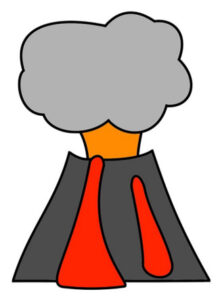
![]()
Some of the primary hazards from volcanoes are lava flows, ash, and toxic gases. Ground movement from volcanoes can also trigger landslides, which could dam rivers and cause flooding.
Lava flows occur when molten rock erupts to the surface and flows like a river of hot liquid rock. Lava flows can range from small and gentle to large and fast-moving. Lava flows burn, knock down, and bury anything in their way. There is little that can be done to stop them because they are so hot and dense: the best thing is to just get out of the way.
Volcanic ash occurs in explosive volcanic eruptions. It is not the same as the ash from a fire, which is made of burned wood or leaves. Volcanic ash is made of tiny shards of rock and glass, which makes it extremely dangerous to breathe or get in your eyes. Large eruptions can send huge amounts of ash into the air, which then rains down on the surrounding area or is carried downwind. Not only is the ash dangerous to people and animals, it is very heavy when it builds up, and like a very large snowfall can block roads and crush buildings. Ash can also kill crops and other plants if enough falls on them. Ash in the atmosphere can damage airplane engines and disrupt air travel.
Most volcanic eruptions also involve toxic gases, including gases like carbon dioxide, sulfur dioxide, hydrogen sulfide, and several types of acid. Carbon dioxide is heavier than air, so it can collect in low places and suffocate humans or animals. Hydrogen sulfide, which can smell like rotten eggs, is very toxic if there’s a lot of it. Sulfur dioxide is also toxic to breathe and can also interact with water in the atmosphere or a lake to form sulfuric acid. Acid can come directly out of a volcano or it can mix with water in clouds and become acid rain or fog. This acid can mix with lake or pond water and turn the water acidic for fish and other animals in the water. Scientists who work near active volcanoes usually have to wear protective masks with filters to remove toxic gases from the air they breathe.
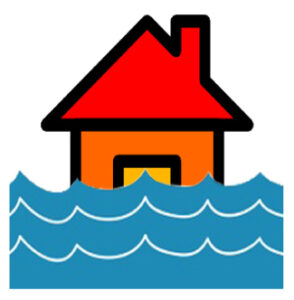
![]()
Floods are the most common natural disaster worldwide — and in the United States, they result in more loss of life and property than any other. Flooding occurs in known floodplains when prolonged rainfall over several days, intense rainfall over a short period of time, or debris in waterways, like rivers and streams, causes them to overflow and flood the surrounding area. Severe thunderstorms can bring heavy rain in the spring and summer; or tropical cyclones and hurricanes can bring intense rainfall to the coastal and inland states in the summer and fall. Flash floods occur within six hours of a rain event, or after a dam or levee failure, and flash floods can catch people unprepared.
As land is converted from fields or woodlands to roads and parking lots, it loses its ability to absorb rainfall. Urbanization increases the amount of impervious areas, causing runoff to be two to six times over what would occur on natural terrain. During periods of urban flooding, streets can become swift-moving rivers and can be dangerous for drivers. Because of the buoyancy effects and power of moving water, even a foot of moving water can be enough to carry away some cars.
Several factors contribute to flooding. Two key elements are rainfall intensity and duration. Intensity is the rate of rainfall, and duration is how long the rain lasts. Topography, soil conditions, and ground cover also play important roles. Most flash flooding is caused by slow-moving thunderstorms, thunderstorms repeatedly moving over the same area, or heavy rains from hurricanes and tropical storms. Floods, on the other hand, can be slow- or fast-rising, but generally develop over a period of hours or days. That’s why NASA’s fleet of Earth-observing satellites is helping scientists and decision-makers improve the prediction of, preparation for, response to, and recovery from floods.
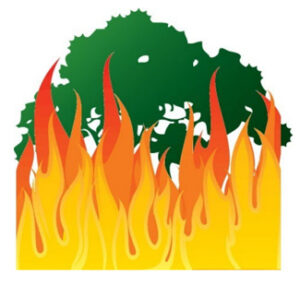
![]()
Wildfire is an essential process connecting terrestrial systems to the atmosphere and climate. As vegetation burns, it releases smoke, carbon, and other materials into the atmosphere. These fires also release nutrients into the soil and are an integral part of ecological succession, plant germination, and soil enhancement.
However, wildfires can also pose serious hazards to wildlife and human communities. The number, severity, and overall size of wildfires has increased through contributing factors including extended drought from climate change, the build-up of fuels, past fire management strategies, invasive species targeting specific tree species, and the spread of residential communities into formerly natural areas.
Earth & Space Hazards
Dust storms, Extreme Temps, Meteor Impact
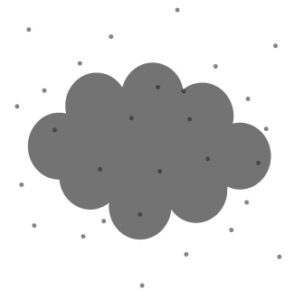
![]()
Dust storms happen when strong winds blow over dry, dusty land, lifting the dust into the air and forming a huge cloud of dust. This dust can block out sunlight and make it difficult to see, and dust can clog mechanical devices and hurt the lungs and eyes of people or animals. On Earth, dust storms are most common in the deserts, especially the Sahara Desert. Dust storms on Earth are usually local or regional: hundreds of kilometers wide at most.
Dust storms do not just occur on Earth. In fact, dust storms on Mars are quite common since the whole planet is a dry, dusty desert. Mars has local and regional dust storms, but sometimes when the conditions are right, dust storms on Mars can grow to cover the entire planet. A planet-wide dust storm in 2018 blocked out the sun on Mars for weeks and ended the Opportunity rover mission. The solar-powered rover could not function in the darkness of the dust storm. The possibility of dust settling on and in machinery is a challenge for engineers designing equipment for Mars. This dust is an especially big problem for solar panels used to power rovers. Even dust devils of only a few feet across — which are much smaller than traditional storms — can move enough dust to cover the equipment and decrease the amount of sunlight hitting the panels. Less sunlight means less energy created. The large global storms can also present a secondary issue, throwing enough dust into the atmosphere to reduce sunlight reaching the surface of Mars.
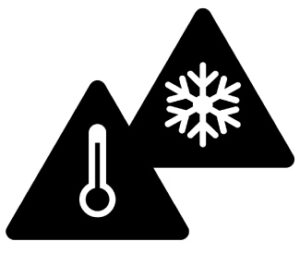
![]()
Heat is transferred by three main processes: conduction, radiation, and convection. Conduction is when something hot is in physical contact with something cold, and the heat flows to the cold object to equalize their temperatures. Radiation is when matter transfers energy by emitting rays or high-speed particles. You may be most familiar with electromagnetic radiation in the form of rays, or waves, such as sunlight, x-rays, and radio-waves. Convection occurs when there are temperature differences across a fluid or gas. For example, when air is heated, the air closest to the heat source becomes less dense due to increased kinetic energy in the particles. This portion of air that is less dense then rises, while the denser portion of air sinks. The process repeats itself because the less dense air begins to cool as it moves away from the heat source, making it sink, while the denser air heats up as it is near the heat source, making it rise. This creates what is known as convection currents. The process of convection needs air or liquid to transfer heat, so in space where there is no air, convection cannot occur.
Without convection, anything that sits out in the sunlight in space gets extremely hot because there is no air to carry the heat away, and radiation and conduction can’t keep up. Likewise, it means that anything that is in the shade in space gets extremely cold: radiation and conduction slowly remove all of the heat, and there is no air to deliver more heat. Since conduction is so ineffective at transferring heat it is possible for the same object (such as a moon rock, a spacecraft, or an astronaut’s space suit) to get extremely hot on the sunlit side and extremely cold on the shadowed side. For example, the International Space Station would be about 250 degrees F (121 °C) on its sunlit side and -250 degrees F (-157°C) in the shade without careful thermal design to keep its internal temperature safe.
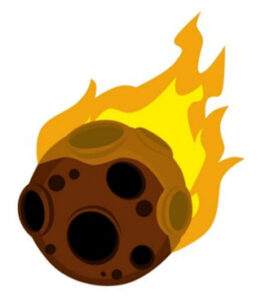
![]()
Orbital debris in space is comprised of both manmade objects and natural objects like meteoroids. Meteoroids are known as “space rocks” and can range in size from dust grains to small asteroids. This term only applies when they’re in space. Most are pieces of other, larger bodies that have been broken or blasted off. Some come from comets, others from asteroids, and some even come from the Moon and other planets. Some meteoroids are rocky, while others are metallic, or combinations of rock and metal. When meteoroids enter Earth’s atmosphere, or that of another planet, like Mars, at high speed and burn up, they’re called meteors.
Micrometeoroids and orbital debris (MMOD) is the number one risk for NASA’s human spaceflight programs. Many orbital debris objects-approximately 20,000—are large enough to be tracked and catalogued by the U.S. Space Surveillance Network and can be avoided by spacecraft maneuvering. But it is the unseen population of MMOD that poses the biggest risk to spacecraft: the orbital debris large enough to cause damage, but too small to track. A micro-impact occurs when a small particle moving at a very high-speed hits a spacecraft or space suit. These particles can be natural micro-meteoroids such as the dust from a comet, or artificial particles such as small pieces of spacecraft or flecks of paint. Objects in orbit, or in transit between planets, are moving extremely fast: thousands of miles per hour. If they run into other objects that are not moving, or that are going that fast in a different direction, the collision can be very dangerous even if the particles are very small. A large grain of sand moving at orbital velocity has an energy comparable to a bullet fired from a gun. Micro-impacts can punch holes in spacecraft or space suits, often with no warning. The best way to protect against this hazard is to design spacecraft with shielding. Thin layers of metal, with some space between them, have been used as shielding on spacecraft for many years. A small impact might puncture through the first layer, but in the process, it breaks up into even smaller particles. These particles impact the next layer and are either stopped or break up even more as they pass through. After several layers, the particles are stopped before they reach the sensitive part of the spacecraft. This sort of shielding works for large spacecraft or space stations but is not practical for space suits.
Space Hazards
Low Gravity, Radiation, Poison Soil

![]()
It is a misconception that there is no gravity in space: The force of Earth’s gravity at the altitude of the space station is only slightly lower than the gravity that we feel at the surface. The difference is that the space station is essentially in free-fall around the Earth, so that the force of gravity (weight) cannot be felt. On planets or other bodies that are smaller than the Earth, gravity is actually weaker, so even on the surface an astronaut will feel lighter. The moon has about 1/6th the gravity of the Earth and Mars has about 1/3rd. Asteroids are much smaller than the moon, and an astronaut would feel nearly weightless.
The human body relies on gravity to function properly. The stress of weight on our bones and muscles tells the body to strengthen them, and the blood pressure difference between our feet and our heads tells our body how much blood we need and how strong our heart needs to be. In a weightless or low-gravity environment, the human body lacks these cues, so the body begins to break down bone, muscle, and blood that it thinks it no longer needs.
Astronauts have specialized exercise equipment that they can use while in orbit to simulate the effects of gravity on the body and encourage the body to maintain healthy levels of bone, muscle, and blood. Vitamins can help to replace the calcium and other minerals lost due to weightlessness.
Even with these mitigations, astronauts who have been off of Earth for a long time take months to fully recover once they are back on Earth.
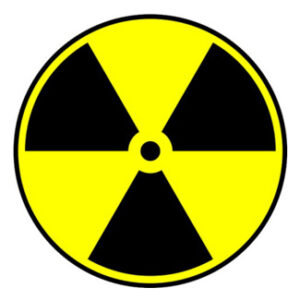
![]()
Radiation is energy in the form of light waves or particles. Many types of radiation are harmless, but high energy radiation, called “ionizing” radiation, is dangerous because it has enough energy to break chemical bonds in animal cells. This is dangerous for two reasons: if a lot of cells are damaged all at once, it can cause radiation sickness, which begins with vomiting, followed by more severe symptoms or even death depending on how much radiation damage occurred. Ionizing radiation damage can lead to cancer later in life as the cell malfunctions when it tries to divide and replicate.
In space, astronauts are at risk from two main types of radiation: galactic cosmic rays and solar flare particles. Galactic cosmic rays are the nuclei of heavy atoms moving at nearly the speed of light. They are produced by distant, extremely high energy processes like super-novae or black holes. When a cosmic ray hits something, like an astronaut or a spacecraft, it breaks apart and forms a shower of high-energy particles and leaves a path of ionized atoms in its path. Cosmic rays can easily penetrate through spacecraft or space suits, but can be stopped by shielding such as lead, concrete, or soil on a planetary surface, or by thick enough layers of specific types of plastic or tanks of water on spacecraft.
The sun is constantly producing radiation, both the kind that is essential for life on Earth (light and heat), and higher energy radiation in the form of x-rays and particles. The particles emitted by the sun are mostly protons, electrons, and helium nuclei, and are sometimes referred to as the “solar wind”. Solar flares are explosions on the surface of the sun that release a burst of x-rays and high-energy particles. X-rays travel at the speed of light and can reach astronauts in minutes, but the particles are slower and can take several days to reach astronauts, giving enough time to seek shelter. These particles are easier to stop than cosmic rays but can still be harmful to astronauts who are not adequately shielded.

Toxic (“Poison”) Soil on Mars
The soil on Mars contains chemicals called perchlorates. These chemicals are salts containing a chlorine atom bonded to four oxygen atoms. They are highly soluble in water and are only found in extremely dry climates. Perchlorate is toxic to humans, interfering with the functioning of the thyroid, so astronauts will need to avoid contact with Martian soil and dust. Perchlorate is also very chemically reactive, so it can be processed to produce oxygen or as a component of rocket fuel.
Regolith (“Scratchy Soil”) on the Moon and Asteroids
The surface of airless bodies like the Moon and asteroids are covered with a powdery soil called “regolith” formed by billions of years of large and small impacts pulverizing the rocks. Much like volcanic ash, regolith is composed of microscopic shards of glass and rock, making it dangerous for astronauts to inhale. Air filters inside the spacecraft or habitat could help mitigate this hazard by removing regolith dust from the air.

